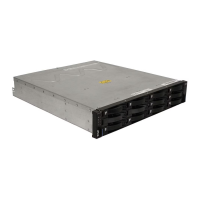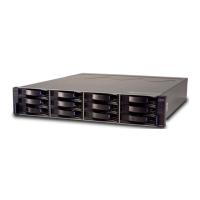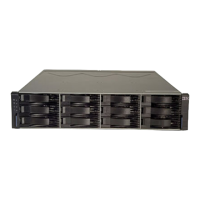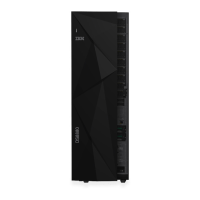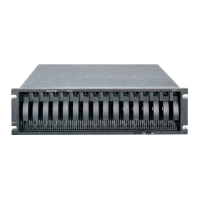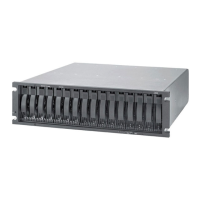Linux Config.fm Draft Document for Review March 28, 2011 12:24 pm
624 IBM System Storage DS3500: Introduction and Implementation Guide
indentifies the host and this will be used for mapping the LUN in IBM System Storage
Manager. This name is specified also in the /etc/iscsi/initiatorname.iscsi file.
12.After following your normal procedure to create the filesystems, edit the /etc/fstab file and
add the following line in order to mount the iSCSI target automatically:
/dev/sdb1 /mnt/ ext3 acl,user,nofail 0 0
13.Verify the correct disk configuration. A detailed verification procedure is shown in 20.1.4,
“Scan and verify the storage logical drive” on page 612
20.2.3 Configuring iSCSI software initiator manually
YaST is a configuration tool only featured in the SuSE Linux distributions. In this section, we
describe the manually procedure also applicable to other distributions.
1. If the target is password protected, it is necessary to provide this information to iscsid by
adding the following lines to the end of the /etc/iscsid.conf. The username should be the
same as the iqn name.
discovery.sendtargets.auth.authmethod = CHAP
discovery.sendtargets.auth.username = <username>
discovery.sendtargets.auth.password = <password>
2. To discover all the available targets, we only have to type one of the target ip addresses,
and the rest of the ip addresses will be found during the discovery. These values are also
saved in an internal persistent database. Type the following command to run the
discovery:
iscsiadm -m discovery -t st -p 192.168.130.101
In the output of the previous command, a line for each target defined will be shown as
shown in Example 20-9. This targets could be reachable or not.
Example 20-9 Discovery output
192.168.132.102:3260,2 iqn.1992-01.com.lsi:2365.60080e50001b0e9a000000004c5b68d7
192.168.130.101:3260,1 iqn.1992-01.com.lsi:2365.60080e50001b0e9a000000004c5b68d7
192.168.130.102:3260,2 iqn.1992-01.com.lsi:2365.60080e50001b0e9a000000004c5b68d7
192.168.131.102:3260,2 iqn.1992-01.com.lsi:2365.60080e50001b0e9a000000004c5b68d7
192.168.131.101:3260,1 iqn.1992-01.com.lsi:2365.60080e50001b0e9a000000004c5b68d7
192.168.133.102:3260,2 iqn.1992-01.com.lsi:2365.60080e50001b0e9a000000004c5b68d7
192.168.133.101:3260,1 iqn.1992-01.com.lsi:2365.60080e50001b0e9a000000004c5b68d7
192.168.132.101:3260,1iqn.1992-01.com.lsi:2365.60080e50001b0e9a000000004c5b68d7
3. By typing the iscsiadm command with the --login parameter, the initiator will try to login to
each of the targets as shown in Example 20-10.
Example 20-10 Login to each target
# iscsiadm -m node --login
Logging in to [iface: default, target:
iqn.1992-01.com.lsi:2365.60080e50001b0e9a000000004c5b68d7, portal:
192.168.132.102,3260]
Note: In previous versions SLES versions, you could add the hotplug option to the
device in the /etc/fstab file to mount the iSCSI targets. For SLES 11, the hotplug option
is no longer available and you have to use the nofail option instead.

